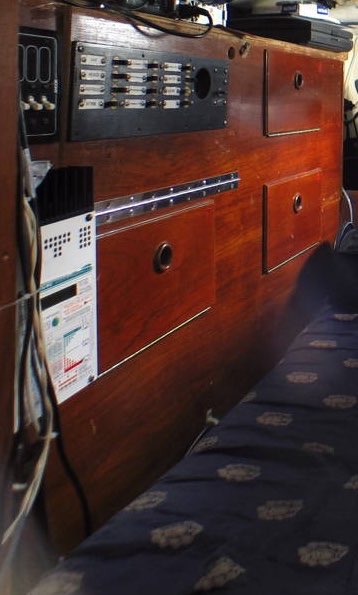


RTN

I use #6 cable to the controller, that’s important. I bought a back up controller 17 years ago but never needed it.
All charge controllers put out a lot of RF interference which affects the quality of weatherfax images from the radio. I added capacitors and chokes to damp down the RF, and placed the radio far away as possible. The radio has its own ground system and battery supply with its own isolated solar panel, so there is no wire connections to the boat systems.
Behind the switch panel is a Trace 1500 watt Inverter/charger. It has an isolation transformer so the shore ground does not connect to the boat 110 volt ground system, this reduces any electrolysis problem. The inverter can run the microwave, the air conditioner ( for an hour or so) and any power tool. It is handy for charging computers, phone etc. The standby current is very small and the inverter very efficient. Trace doesn’t make them any more but the design is available from others. It has been in use for more than 20 years. The charger is a 30A unit that is a bit much for my batteries, so I never use it as a charger.
I used to have 110V outlets, but got rid of them all because it complicated the wiring runs. I now use a contractors yellow extension cord with outlets along its length. The outlets pop up in various places in the salon.
Another thing was the replacement of the original wiring. It looked neat but from a radio reception standpoint it was bad because all the wires bundled together transferred electrical interference from wire to wire and radio to radio. Bad for electrical storms too. If the lightning were close by the energy would be transfrerred to all devices on the boat at once!
So I took out the old wiring and ran my own using a distributed network where main power was diverted to certain locations where a sub panel of fuses took power to individual items. All wiring was marine grade, tinned wire.
Batteries
Four 6V golf cart batteries are wired to give 440 A-Hrs capacity. I use 100 A-hrs a day, so they never get discharged more than 25%. One small motorcycle size battery is used for the navigation equipment and radio.


